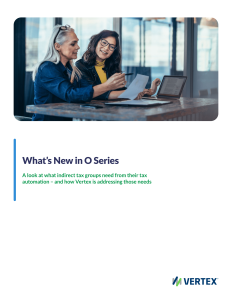How Financial Technology is Empowering Financial Inclusion and Accessibility

Financial technology (FinTech) is not just revolutionizing traditional financial services but is also playing a crucial role in promoting financial inclusion and accessibility. By leveraging innovations like digital wallets, blockchain, and artificial intelligence, FinTech is making financial services more accessible to underserved and marginalized populations. In this blog, we’ll explore how FinTech is empowering financial inclusion and accessibility, and the positive impact it is having on global financial ecosystems.
1. Digital Wallets and Mobile Banking
Expanding Access to Financial Services:
Digital wallets and mobile banking applications have become pivotal in increasing financial inclusion. These technologies allow individuals to manage their finances, make transactions, and access banking services using smartphones, which is especially valuable in regions with limited access to traditional banking infrastructure.
Example:
- M-Pesa: A widely successful mobile money service in Kenya, M-Pesa enables users to send and receive money, pay bills, and access financial services via their mobile phones, reaching millions who previously lacked access to formal banking.
2. Blockchain and Cryptocurrency
Providing Financial Services to the Unbanked:
Blockchain technology and cryptocurrencies offer a decentralized alternative to traditional banking systems, which can be particularly beneficial for the unbanked or underbanked populations. These technologies provide a way to conduct transactions and store value without the need for traditional financial intermediaries.
Example:
- Bitcoin and Stablecoins: Cryptocurrencies like Bitcoin and stablecoins offer financial services to individuals in regions with unstable banking systems or hyperinflation, providing a stable store of value and a means of conducting transactions globally.
3. Microfinance and Peer-to-Peer Lending
Access to Credit and Investment Opportunities:
Microfinance platforms and peer-to-peer (P2P) lending networks leverage FinTech to provide small loans and investment opportunities to individuals and small businesses that may not qualify for traditional bank loans. These platforms often have lower barriers to entry and can reach underserved communities.
Example:
- Kiva: A global micro-lending platform that connects lenders with entrepreneurs in developing countries, allowing them to access small loans to start or expand their businesses.
4. Artificial Intelligence and Personalized Financial Services
Tailoring Financial Solutions:
AI-powered financial services can offer personalized solutions to individuals based on their specific needs and financial situations. By analyzing data and predicting financial behavior, AI can provide tailored financial advice, budgeting tools, and investment recommendations.
Example:
- Robo-Advisors: These AI-driven platforms offer personalized investment advice and portfolio management based on individual risk tolerance and financial goals, making investment services more accessible to a wider audience.
5. Financial Literacy and Education Tools
Empowering Through Knowledge:
FinTech companies are developing educational tools and platforms to enhance financial literacy and empower individuals to make informed financial decisions. These tools often include interactive apps, online courses, and financial planning resources.
Example:
- Financial Education Apps: Apps like Mint and YNAB provide users with budgeting tools, financial tracking, and educational content to improve their financial literacy and management skills.
6. RegTech and Compliance Solutions
Ensuring Fair Access to Financial Services:
Regulatory technology (RegTech) solutions are helping financial institutions comply with regulations and prevent fraud, which contributes to a fairer and more transparent financial system. By automating compliance and risk management processes, RegTech ensures that financial services are accessible and trustworthy.
Example:
- AML and KYC Technologies: AI-powered anti-money laundering (AML) and know-your-customer (KYC) solutions enhance the security and transparency of financial transactions, helping to build trust and access for all users.
7. Inclusive Design and Accessibility Features
Making Financial Technology Accessible:
FinTech companies are increasingly focusing on inclusive design to ensure their platforms are accessible to users with disabilities. This includes features like voice commands, screen readers, and adaptable interfaces to accommodate diverse user needs.
Example:
- Accessibility Features: Mobile banking apps and financial platforms are incorporating features like voice control and large text options to make their services usable by individuals with visual impairments or other disabilities.
Challenges and Considerations
1. Digital Divide:
Despite the advancements, there remains a digital divide that affects access to technology. Ensuring that FinTech solutions are available to those without reliable internet access or modern devices is crucial for true financial inclusion.
2. Data Privacy and Security:
As FinTech solutions handle sensitive financial information, safeguarding data privacy and security is essential. Financial institutions must implement robust measures to protect user data and maintain trust.
3. Regulatory Challenges:
The evolving regulatory landscape can impact the deployment of FinTech solutions. Navigating compliance requirements and ensuring that innovations align with regulations is important for sustainable growth and accessibility.
Conclusion
FinTech is playing a transformative role in promoting financial inclusion and accessibility by leveraging technologies like digital wallets, blockchain, and artificial intelligence. These innovations are breaking down barriers to financial services, empowering underserved populations, and enhancing financial literacy. While challenges remain, the continued development and deployment of inclusive financial technologies have the potential to create a more equitable and accessible financial system for all. By embracing these advancements, we can work towards a future where everyone has the opportunity to participate in and benefit from the global financial ecosystem.







